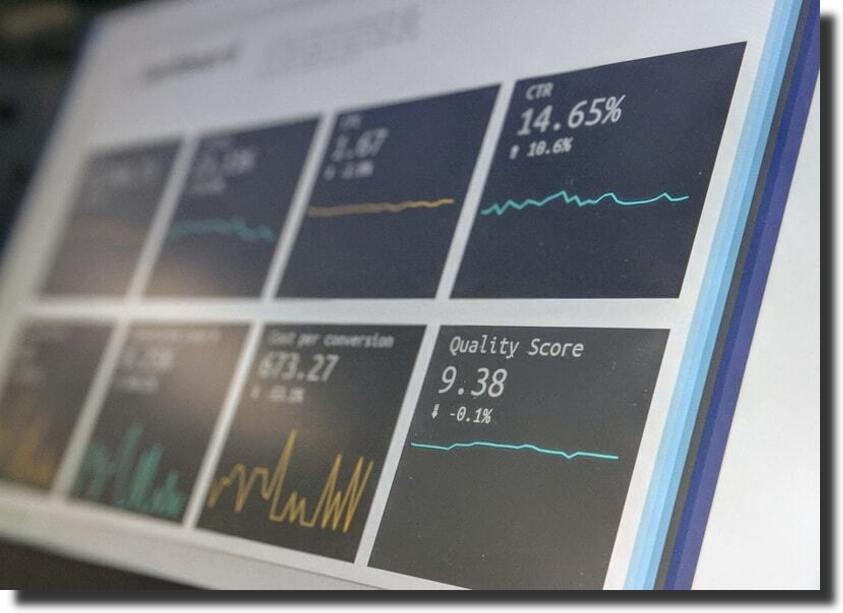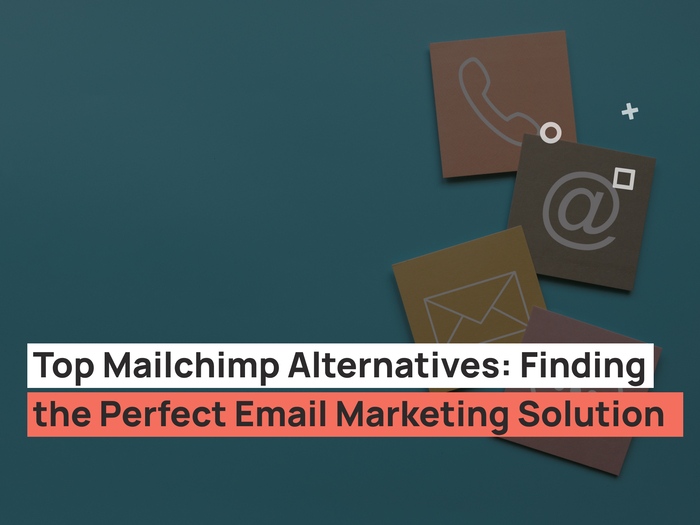A certain amount of acquisition cost is unavoidable for a digital marketing campaign to succeed. That’s because you’ll have to invest in acquisition costs to turn casual people browsing the web into loyal customers.
The question now is, what are some of the different ways you can go about doing this that bring in the results and won’t be a waste of resources? First off, you need to understand customer acquisition cost and what CAC marketing (customer acquisition cost) and CPA (cost per acquisition) entail.
The process of attracting new customers in a digital landscape where users are bombarded with all kinds of content at high speed per minute can be a challenge. Other than that, acquisition costs tend to mount over time as well. The more established your business gets, new customers get more expensive to reach, and converting them will require different strategies.
What is customer acquisition cost?
Nowadays, the insane rise of web-based companies has led to increased customer acquisition costs (CAC). Businesses mainly running online have to invest in extensive targeted campaigns that track the progress of consumers becoming loyal customers.
The CAC meaning is the cost of convincing a potential customer into buying a product or service and then choosing your brand and company to come back for more. A lot goes into the CAC metric that you should know as a professional, for example, how you can measure it and what you need to do to improve it.
A company’s CAC marketing costs cover everything from advertising, marketing team, sales team costs to creative, technical, publishing, production costs, and inventory upkeep.
This is why the CAC metric is something both companies and investors look at and are interested in. It gives them a direct idea of how effective the digital marketing campaigns they are employing are.
Difference between CAC and CPA
To look at is the cost per action (CPA). That means the total cost to hook in the actions of one potential customer on any advertising campaign or channel. Those actions refer to things like clicks, downloads, and installs. So that would mean pretty much any ad-related action that will be valuable to your business.
It’s easy to get confused, though, since CPA is used to measure the cost of things leading to CAC. CAC and CPA are entirely different metrics. However, conflating the two together will lead to an inaccurate understanding of the digital marketing model as a whole.
Take a look at the table below to help you understand further.
| CAC | CPA |
| Customer Acquisition Cost | Cost Per Acquisition/Cost Per Action |
| Marketing and sales expenses divided by the number of new customers | The cost of a marketing campaign is divided by the number of actions being measured |
| Narrowed down to the measure of the costs involved in acquiring a customer only | A broad term includes actions like clicks, form filling, registration for demo/free trials, and more. |
| Reflects the money you spend to acquire a customer | Reflects the money you pay for your target audience to perform a specific action, which may or may not be a purchase. |
What to ask yourself before starting any CAC campaign?
Before getting to what effective customer acquisition using digital marketing looks like and how it can implement in the best way, there are some questions you need to ask yourself.
Do you know your audience?
It seems obvious, doesn’t it? However, many businesses fail to implement strategies that would attract their target audience because they do not spend the time to get to know them.
Any marketing campaign would fall flat if you are not aware of the purchasing behavior of your potential customers. It is necessary to look up and track which digital channels your target audience uses and why.
For example, people looking into redecorating their households are far more likely to actively use their Pinterest account for inspiration. So if you happen to have a business related to furniture, you’d be missing out big time if you are not present on that particular platform.
Have you identified your customer’s channels?
Create a typical customer profile that thoroughly defines where they go and why. This way, you can create a personalized strategy instead of wasting resources to just be on every channel.
Don’t be trapped by the myth that your social media presence is dependent on the number of channels your business is present at. It’s really about quality, not quantity when it comes to this.
Based on the customer profile you create, identify the top three platforms your target audience is most likely to use. This will help you improve the quality of the resources you choose to put into every channel. And create a more robust presence that will attract attention.
Did you start collecting data?
Employing any marketing strategy is useless unless you’ve collected data regarding their impact. You must determine which campaigns did well and which channels brought in the newest customers.
There are many tools that can now give you insights into how your customers are behaving and responding to your strategies, such as Google Analytics, SproutSocial, or MailChimp. The date you garner will allow you to fine-tune your campaigns further.
Answering these three questions and reevaluating your approach to digital marketing will help link your brand to your customer’s buying intent. You won’t waste time and resources because you’ll know your customers, where they are, and what they want.
All that’s left to do now is meet them halfway with the most compelling customer acquisition strategy you can create. Your message has to be appealing and convincing enough to hook them in to take action and then follow through with a purchase.
Are you prepared to take on the response?
Before starting the acquisition process, your business has to be prepared for the influx of customer inquiries it might receive.
You have to make sure that your products are ready for the target market and cater to the potential demand. If you have an online store/eCommerce platform, then it has to be up to date and optimized for a pleasant user experience for those who visit.
Your servers have got to be ready for high traffic as well, this isn’t being overconfident, but instead, it is to make sure you are not underprepared for any potential circumstance. A well-trained support team that can respond to customer inquiries without delay must also be present.
Digital marketing for customer acquisition: beginner edition
Planning and more planning, along with some organizing. That’s probably the best rule to keep in mind when developing a solid customer acquisition process. Let’s see what it entails.
What is your business strategy going to be?

A good business strategy will include SWOT analysis for your customer acquisition cost and process. A SWOT analysis has your business’s strengths, weaknesses, opportunities, and threats.
Besides the first two factors being self-explanatory, opportunities include any element in the landscape that your company can exploit to its advantage. Threats will be any factors that can put your business at a disadvantage and cause unforeseen trouble.
Depending on your findings through the analysis, you can then figure out which strategies you will need to target which areas. This may include maximizing sales, increasing brand awareness, obtaining loyal customers, and more.
Get an estimate of your customer acquisition cost

This is where the union of your finance team and your marketing team will come into play. You cannot give the go-ahead to any potential plans unless you know you have the necessary budget for it available.
For this reason, you will have to come up with an estimate of the cost you are willing to shut your eyes and bear. After that, look at the set expectations for return on investment according to your customer acquisition budget.
The cost of customer acquisition (CAC) will tell you how much value a customer will bring into your business. This cost, therefore, becomes very important.
Create your target market

There are a few things to keep in mind when identifying your target market. It is necessary to find out who they are, how to gain them, and in what ways you can communicate with them.
Analyzing these areas will help you market your products/services in the most effective ways possible.
1) What do your customers need?
First off, as a business, you have to be well aware of the customer problems that your product and service intends to solve.
A good idea of this will help you figure out which demographic of society is most likely to suffer from these problems. It can also help you identify niche groups of people that you would not otherwise have thought of but are also a target of what your company provides.
2) Create a mental picture of your target customer
Start listing all the different customers that could be the potential target audience for your business’s problems. You can group them by location, job title, or market sector.
Different kinds of personal information about the audience may be relevant to look at. For example, whether they are married or not, what their gender is, and whether they have any shared common interests such as a sport or other hobby, etc.
Remember that all the defining you do must not go off the mark and stay relevant.
3) Look into niche markets.
As mentioned earlier, it will be beneficial to find potential audiences in niche markets. Your audience isn’t bound to specific channels anymore like back in the old days in today’s world. The rapid growth of online platforms has expanded the global melting pot.
You can now evaluate how beneficial it will be to produce personalized products and services. This will aid significantly in building your reputation and gaining referrals in the long run.
Which acquisition channel should you go for?

Your company must carefully choose different strategies to contact your target customers not to waste resources. By doing various types of research, conducting surveys, collecting email addresses, and utilizing other analytical tools, you can find the right customers for your product.
It will also be worthwhile to look up what your direct competition is doing and analyze where they fall short. Testing one channel at a time will be an excellent way to play it safe.
There are both online and offline channels you can choose from. Let’s look at a brief list of them both.
1) Print Ads
Print ads include everything from newspapers magazines to direct mail advertising. You will find a semblance of control over who you are targeting. Although it may be more complicated than it looks. However, there is a benefit. of getting your marketing message to a specific type of person.
For example, if your products include fashionable clothing, then advertising using a fashion magazine would make sense to reach potential customers and other stakeholders and investors.
2) TV/Radio
Before you write this one off as old-fashioned and behind the times, think about how if you happen to be a local business. Then this channel might be the most effective one to go for. You will be able to reach a broader market despite the higher expenses.
3) Community activism
Community activism is one of the best ways to strengthen your PR image while simultaneously bringing value to your business. If you employ strategies that showcase the efforts made towards social responsibility in the wider community, customers will reward you with loyalty.
4) Website
A well-optimized website is one of the most popular ways of gaining new business for a reason. Many companies use their web platforms for customer acquisition, and it makes sense why it works so well.
A good website will provide the target audience with the correct information they are looking for and will serve as a way to convince existing customers to try out different subscriptions while giving those who are casually browsing away to see what your products and services entail comfort their homes.
5) Social Media
It’s common knowledge that social media has become a significant hub for effective marketing for businesses of all kinds.
Whether making your organic posts or using paid ads, broadcasting your customer acquisition strategy to new audiences on powerful platforms such as Twitter, Facebook, Instagram, etc., will reap benefits.
Collaborating with influencers will significantly boost the response you aim to get from your target audience. Online trends have changed enough that your audience will likely find non-celebrity influencers and bloggers far more authentic.
Reviews from those your audience trusts to give honest opinions about a product/service will increase your brand awareness and reach the same pool of people interested in what you have to offer.
It will guide them directly to your platforms, increasing CPA. The next depends on how your customer service responds to the incoming inquiries.
Three words: Search Engine Optimization (SEO)

It’s impossible to think of customer acquisition methods or bring up SEO strategies. Once your website and social media are set up, boosting traffic will be essential to rank better in the search results.
The fact the backbone of SEO is keywords makes sure that the audience you are targeting is as precise as possible, which narrows down your marketing enough to hit the mark directly. This way, your audience will come to you instead of you chasing them.
However, since this is more of a long-term strategy, it will take time to show results. Steady growth is always the way to go, and eventually, your digital marketing will boost customer acquisition rates thanks to the increased incoming traffic.
Pop-ups

Pop-ups can be a double-edged sword. Too many, and you’re going to put off whoever just entered your website into leaving immediately with all the clutter. So you have to be intelligent and precise about it.
The different kinds of pop-ups you can use are cart-abandonment pop-ups, social media CTA buttons, newsletter sign-ups, special offers, referral source promotions, and contests. Each is tailored for a relevant action that a potential customer can be persuaded to take. What do all of these have in common?
Therefore, the pop-ups you choose to have must either make your product/service look more attractive or showcase some kind of functional advantage for the user.
Run a referral program

Referral marketing is an effective promotional tactic that incentivizes existing customers to refer your business to their friends, family, and other inner circles.
These programs offer points or cash-back in account credits whenever they share a referral code with people who haven’t purchased your products or services before. Modern programs use software to track successful referrals, and the rewards are automated.
How to reduce customer acquisition costs?
It will always be in a company’s best interests to keep its customer acquisition costs low. When acquisition costs are high but the customer’s lifetime value is low, the company is not operating efficiently at its optimum level.
You will be able to increase the business revenue by a significant margin by reducing customer acquisition costs. So, it is worthwhile to look into it.
1. Ever heard of the Pareto principle?
The Pareto principle puts the work smart, not hard motto into practice in the best way. The trick is to focus on the 20% that gets 80% of your sales whenever deploying your digital marketing campaigns.
Look up the top locations, products/categories, and top traffic sources and double down on them to see significant results. By doing this, you will be able to target your ads, pitch, and product offerings in a manner that will make it easier to convert.
You will also be saving any extra expenses going towards marketing in locations where not much profit is coming from. If you’re worried about having leftover stock of products that aren’t selling, you can consistently offer them at discounted prices or in bundles with your high-selling ones.
2. Identify the gaps in your conversion funnel
A conversion funnel represents the customer’s journey on your website. It is common for eCommerce websites in particular to experience a lot of leaks which inevitably leads to heavy spending on email marketing, retargeting, and other channels to bring them back.
By analyzing the behavioral flow report on analytic tools such as Google Analytics, you’ll be able to see the number of drops on every page of your website.
After figuring out which ones have the maximum drop-offs, you can look at each page’s click and navigation data and find the friction points to fix them accordingly.
3. Content Marketing
The key is to invest in platforms that have recently gained popularity and are creating unique content outside of the norm with content marketing. Looking into the new features such as Youtube Shorts or Instagram Reels will be very beneficial.
Many creators and brands are utilizing such features to drive their engagement. Getting relevant creators to include your product/service in ways not too in-your-face will do wonders when appealing to target audiences.
Whether it’s short DIY videos or a casual mention of your brand when talking about something different, these types of product placements reduce the costs of making similar content yourself.



